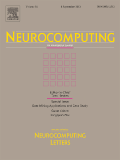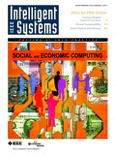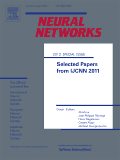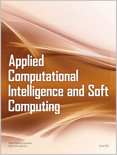
NEUROCOMPUTING
Scope & Guideline
Exploring the Intersection of Mind and Machine
Introduction
Aims and Scopes
- Neural Networks and Deep Learning:
Research focusing on the design, optimization, and application of neural networks, particularly deep learning architectures, for tasks such as image classification, object detection, and natural language processing. - Graph Neural Networks (GNNs):
Exploration of graph-based models for learning and inference, particularly in structured data applications such as social networks, biological networks, and recommendation systems. - Reinforcement Learning (RL):
Development of RL techniques for various applications, including robotics, game playing, and real-world decision-making, often involving multi-agent systems. - Time Series Analysis and Forecasting:
Research utilizing machine learning methods for analyzing and predicting trends in time-dependent data across various domains, including finance, healthcare, and environmental studies. - Anomaly Detection and Robustness:
Methods for identifying outliers or abnormal patterns in data, particularly in dynamic or complex systems, with a focus on ensuring the robustness of models against adversarial attacks. - Multi-modal Learning and Representation Learning:
Integration of multiple data modalities (e.g., images, text, audio) for enhanced learning outcomes, including applications in sentiment analysis, action recognition, and cross-modal retrieval. - Neuro-inspired Models and Algorithms:
Investigations into algorithms and models that draw inspiration from biological neural systems, contributing to advancements in neuromorphic computing and cognitive architectures. - Applications in Healthcare and Biomedical Engineering:
Utilization of computational methods to address challenges in healthcare, including medical image analysis, disease diagnosis, and personalized medicine.
Trending and Emerging
- Hybrid and Multi-Modal Models:
Increasingly, researchers are exploring hybrid models that integrate multiple modalities, such as combining visual and auditory data for improved recognition tasks. - Explainable AI (XAI):
A growing emphasis on developing models that not only perform well but also provide interpretability and transparency, allowing users to understand decision-making processes. - Federated Learning and Privacy-Preserving Techniques:
A notable rise in research focusing on federated learning approaches that enable model training across decentralized data sources while preserving user privacy. - Neuro-Inspired Computing:
Continued interest in algorithms and architectures inspired by biological neural systems, contributing to advancements in neuromorphic computing and brain-inspired AI. - Self-Supervised and Semi-Supervised Learning:
An emerging trend towards leveraging self-supervised and semi-supervised learning techniques, which allow models to learn from less labeled data, has gained traction in various applications. - Dynamic and Adaptive Systems:
Research focusing on dynamic systems that can adapt to changing environments and data distributions is on the rise, particularly in reinforcement learning and multi-agent systems. - Robustness and Adversarial Defense:
There is increasing attention on developing methods that enhance the robustness of models against adversarial attacks and ensure reliable performance under various conditions. - Graph-Based Learning Techniques:
An upsurge in the application of graph-based learning methods, particularly in areas like social network analysis, recommendation systems, and biological data interpretation.
Declining or Waning
- Traditional Machine Learning Techniques:
There has been a noticeable decline in papers focusing solely on traditional machine learning methods, such as basic regression models and decision trees, as researchers increasingly turn to more complex deep learning and neural network-based approaches. - Static Analysis Methods:
Research involving static analysis techniques for data processing and interpretation has decreased, likely due to the growing demand for dynamic and adaptive methods that can handle real-time data. - Basic Neural Network Architectures:
Papers centered around simple feedforward neural networks are less frequent, as the focus has shifted towards more sophisticated architectures such as convolutional and recurrent neural networks that better handle complex tasks. - Overly Specialized Applications:
There has been a decrease in studies focused on highly specialized applications of neural networks in niche areas, as the community trends towards broader, more universally applicable methodologies.
Similar Journals

PROGRAMMING AND COMPUTER SOFTWARE
Exploring the Frontiers of Software Engineering ExcellencePROGRAMMING AND COMPUTER SOFTWARE is a distinguished journal committed to advancing the field of software development and programming methodologies. Published by PLEIADES PUBLISHING INC, this journal has been a valuable resource since its inception in 1978, reaching out to researchers, professionals, and students alike. With an emphasis on rigorous peer-reviewed articles, the journal holds a Q3 ranking in the realm of Software according to the latest 2023 Category Quartiles. Though it does not offer open access, the journal ensures that high-quality research is disseminated to its audience, providing insights into evolving programming techniques, software engineering challenges, and innovative solutions. With its convergence of years extending to 2024, PROGRAMMING AND COMPUTER SOFTWARE remains a pivotal publication, fostering a deeper understanding of the complexities in computer programming while supporting the broader software community.

IEEE INTELLIGENT SYSTEMS
Transforming Challenges into Intelligent InnovationsIEEE Intelligent Systems, published by the renowned IEEE Computer Society, stands at the forefront of research in the fields of Artificial Intelligence and Computer Networks and Communications. With an impressive Q1 ranking in both categories as of 2023 and Scopus rankings placing it in the top 5% of its field, this journal not only showcases cutting-edge scientific advancements but also serves as a vital resource for practitioners, academics, and students seeking to deepen their understanding and application of intelligent systems. The journal covers a broad range of topics including machine learning, data mining, and system architectures, reflecting its commitment to addressing contemporary challenges and innovations in technology. Although it does not offer open access, the journal's research contributions are invaluable, ensuring that its readership remains engaged with the latest findings and applications in a rapidly evolving field. For those interested in submitting high-quality research or staying updated on the latest developments, IEEE Intelligent Systems represents an essential hub of knowledge.

EURASIP Journal on Advances in Signal Processing
Fostering Knowledge Exchange in Signal Processing Technologies.EURASIP Journal on Advances in Signal Processing, published by Springer, is a premier open-access journal that has been at the forefront of research in the field of signal processing since its inception in 2001. With a focus on advancing the disciplines of Electrical Engineering, Hardware and Architecture, and Signal Processing, this journal plays a crucial role in disseminating innovative findings and facilitating collaboration among academics and industry professionals. Ranking in Q2 for Electrical and Electronic Engineering and Q3 in both Hardware and Architecture and Signal Processing as per the 2023 category quartiles, it highlights the journal's commitment to high-quality research. The journal is indexed in Scopus, reflecting its reputable standing within the global research community. Researchers, professionals, and students are invited to contribute to and benefit from the wealth of knowledge and advancements presented in each issue, furthering their understanding and application of state-of-the-art signal processing techniques.

NEURAL NETWORKS
Transforming Insights into Intelligent SolutionsNEURAL NETWORKS, an esteemed journal with the ISSN 0893-6080 and E-ISSN 1879-2782, is published by Pergamon-Elsevier Science Ltd in the United Kingdom. This influential journal, established in 1988 and continuing its publication through 2024, is recognized for its significant contributions to the fields of Artificial Intelligence and Cognitive Neuroscience, ranking in the Q1 category in both disciplines as of 2023. With a strong Scopus rank of #4/115 in Cognitive Neuroscience and #35/350 in Artificial Intelligence, and a commendable percentile of 96th and 90th respectively, NEURAL NETWORKS stands at the forefront of academic research. Researchers, professionals, and students can benefit from the journal's rigorous peer-review process and the dissemination of groundbreaking findings that shape understanding in artificial intelligence methodologies and their cognitive applications. While the journal currently operates under traditional access options, it serves as a vital resource in fostering innovations and cross-disciplinary collaboration.

Frontiers in Computational Neuroscience
Bridging Biological Understanding and Computational Excellence.Frontiers in Computational Neuroscience, published by FRONTIERS MEDIA SA, is a leading journal within the fields of neuroscience and computational biology, dedicated to advancing the understanding of the brain's complex functions through innovative computational methodologies. Since its establishment in 2007, this Open Access journal has provided a platform for researchers around the globe to share their groundbreaking findings, as evidenced by its continual presence in the academic conversation and a strong ranking within Scopus metrics (Rank #12/49 in Neuroscience - Neuroscience (miscellaneous) and Rank #63/97 in Cellular and Molecular Neuroscience). With an esteemed impact factor reflective of its quality and influence, and a commitment to providing freely accessible research, this journal plays a crucial role in fostering collaboration and knowledge dissemination among professionals, researchers, and students alike. Located in the scientific hub of Switzerland, it invites submissions from diverse perspectives, aiming to bridge the gap between computational models and biological insights through rigorous peer-reviewed publications.

AI, published by MDPI, is a distinguished open access journal dedicated to advancing the field of artificial intelligence. Since its inception in 2020, the journal has swiftly established itself as a prominent platform for scholarly research, currently ranking in the Q2 category for 2023 within the artificial intelligence sector according to Scopus. With an impressive global reach from its base in Basel, Switzerland, the journal aims to foster innovation and collaboration among researchers, professionals, and students alike, providing a forum to share groundbreaking findings and applications in AI. The journal's commitment to accessibility ensures that research is available to a wide audience, enhancing knowledge dissemination and contributing significantly to the ongoing evolution of artificial intelligence technologies. To explore the latest in AI research, readers can access articles through their open access model, encouraging an inclusive academic environment.

IEEE Computational Intelligence Magazine
Innovating the Future of Artificial Intelligence ResearchIEEE Computational Intelligence Magazine, published by the esteemed IEEE-INST ELECTRICAL ELECTRONICS ENGINEERS INC, is an essential resource for researchers and professionals in the fields of Artificial Intelligence and Theoretical Computer Science. With a robust Q1 ranking in both categories for 2023, this magazine stands out as a leader in disseminating cutting-edge research and innovative applications within computational intelligence. As an invaluable conduit for knowledge, it covers a diverse range of topics, including but not limited to machine learning, neural networks, and data mining. The magazine is particularly recognized for its interdisciplinary approach, bridging gaps between theory and application while contributing to advancements in technology and society. Although it does not offer open access, the insights provided are critical for staying at the forefront of this rapidly evolving discipline. Join a community of like-minded scholars and practitioners by exploring the latest findings and trends published from 2006 to 2024, operating from its headquarters at 445 Hoes Lane, Piscataway, NJ, United States.

Applied Computational Intelligence and Soft Computing
Shaping the Future of AI and EngineeringApplied Computational Intelligence and Soft Computing, published by HINDAWI LTD, is a premier open access journal that has been disseminating critical research since 2009, focusing on the intersection of artificial intelligence and soft computing. With an impressive array of quartile rankings in 2023, including Q2 in Civil and Structural Engineering and Computational Mechanics, this journal has established itself as a significant contributor to the fields of computer science and engineering. Based in Egypt, it plays a vital role in advancing knowledge by providing researchers, professionals, and students with easy access to high-quality studies. The journal’s rigorous peer-review process ensures that only the most impactful research is highlighted, making it an essential resource for those looking to stay abreast of the latest innovations and methodological advancements in applied computational intelligence. Its Scopus rankings further affirm its influence and reputation within the academic community, exemplifying its commitment to facilitating collaboration and fostering intellectual discourse in various scientific domains.

NETWORK-COMPUTATION IN NEURAL SYSTEMS
Illuminating the Complexities of Neural SystemsNETWORK-COMPUTATION IN NEURAL SYSTEMS is a distinguished journal published by Taylor & Francis Inc, focusing on the innovative intersection of network theory and neural computation. Since its inception in 1990, this journal has provided a vital platform for researchers and professionals in the field of neuroscience, exploring the dynamics of neural networks and computational models. With its current Q3 category ranking in Neuroscience (miscellaneous) and a robust position in Scopus, the journal plays a critical role in advancing knowledge and discussion within this interdisciplinary area. The journal addresses a wide range of topics related to the computational aspects of neural systems, fostering collaboration and providing valuable insights amongst scholars. Although it is not an open-access publication, its well-curated content remains accessible through institutional subscriptions, ensuring that significant research reaches the hands of those who need it. As it continues to evolve through 2024 and beyond, NETWORK-COMPUTATION IN NEURAL SYSTEMS stands as a key resource for anyone deeply engaged in understanding the complexities and intricacies of neural computations.

NEURAL COMPUTING & APPLICATIONS
Transforming Ideas into Impactful ApplicationsNEURAL COMPUTING & APPLICATIONS is a premier journal dedicated to the burgeoning fields of Artificial Intelligence and Software Engineering, published by Springer London Ltd. Established in 1993, the journal serves as a pivotal platform for disseminating cutting-edge research and innovative applications in neural computing, covering a broad range of topics from algorithm development to real-world applications. With its impressive categorization in the 2023 Journal Quartiles—ranging Q2 in Artificial Intelligence and Q1 in Software—it stands out in its discipline, ranking 42nd out of 407 in Computer Science Software and 50th out of 350 in Computer Science Artificial Intelligence, reflecting its significant impact in the academic community. Although not an open access journal, it provides vital access to significant findings and methodologies that drive advancements in technology. Researchers, professionals, and students looking to stay abreast of the most relevant and impactful developments in these fields will find NEURAL COMPUTING & APPLICATIONS an indispensable resource.